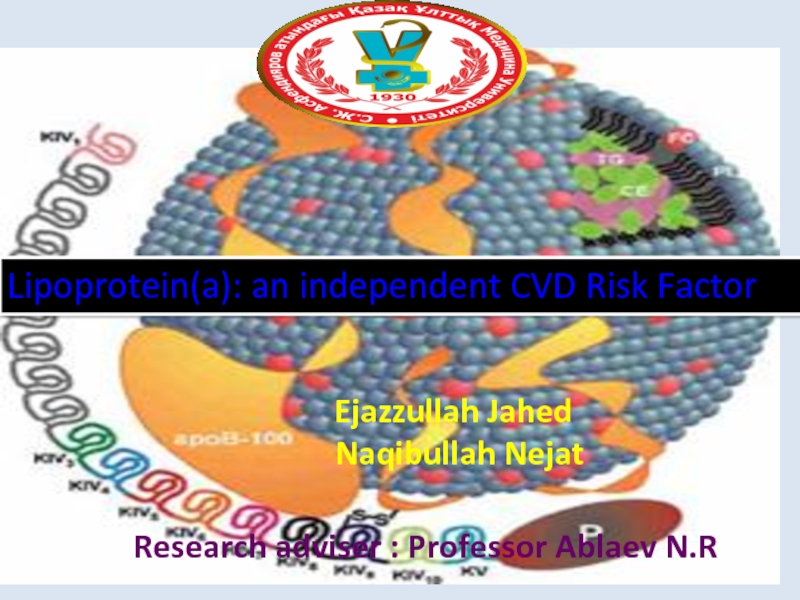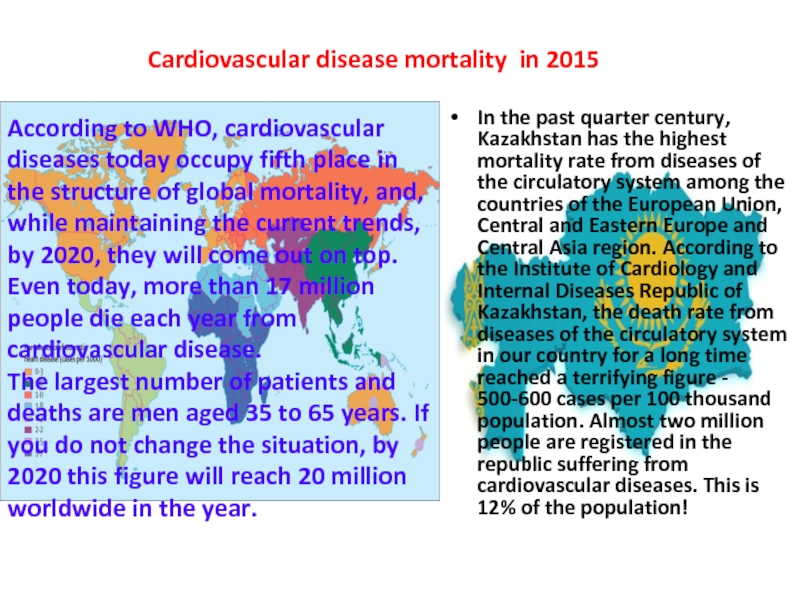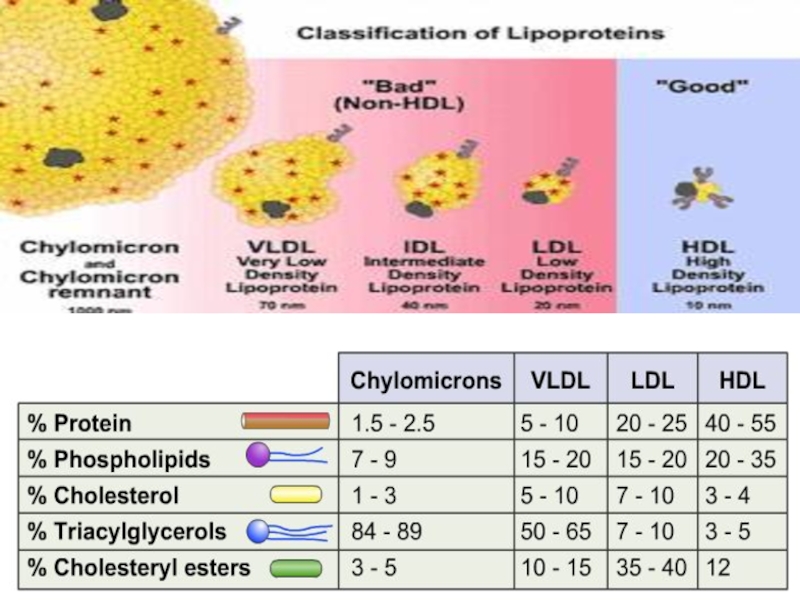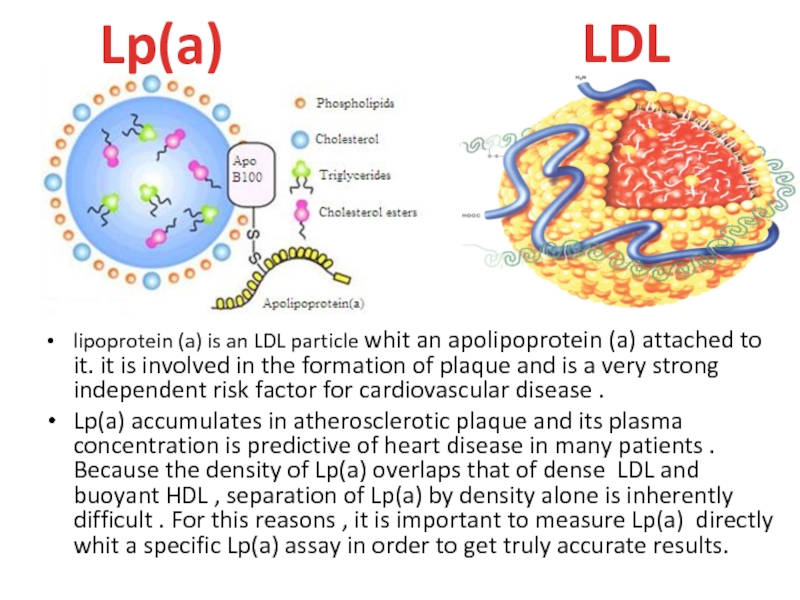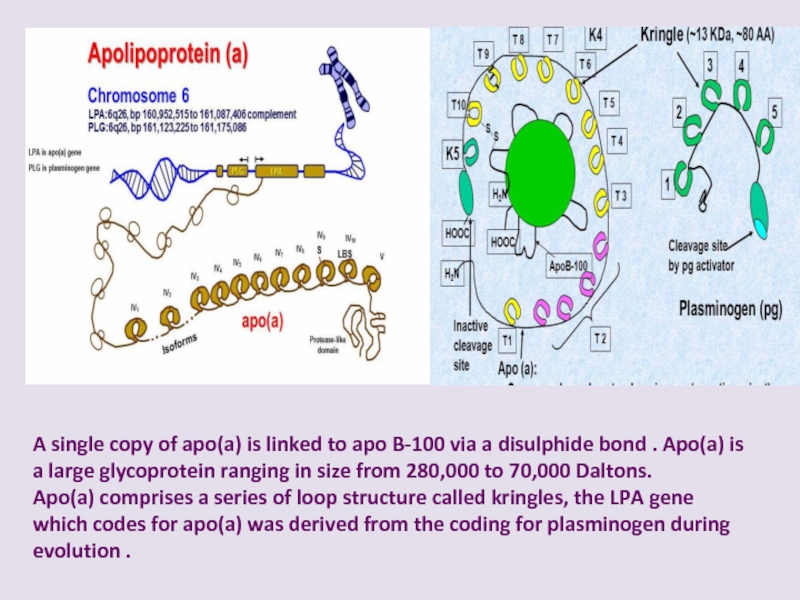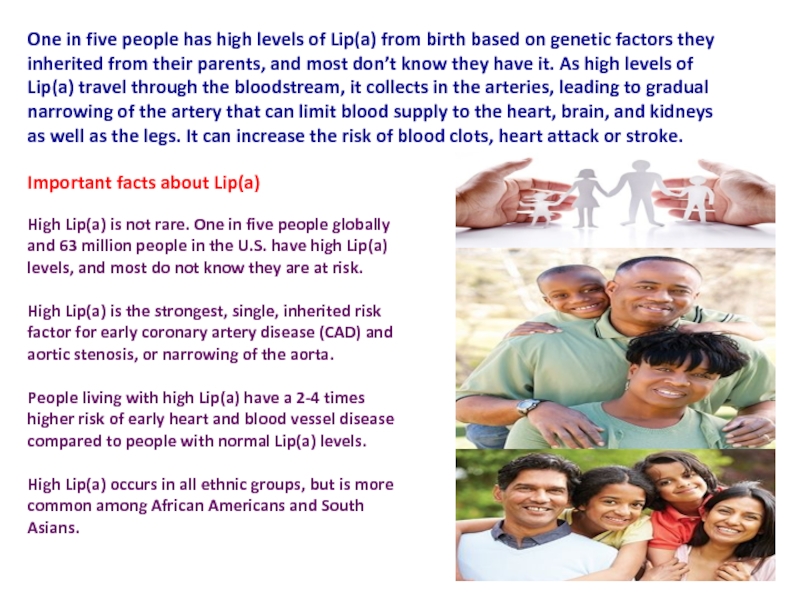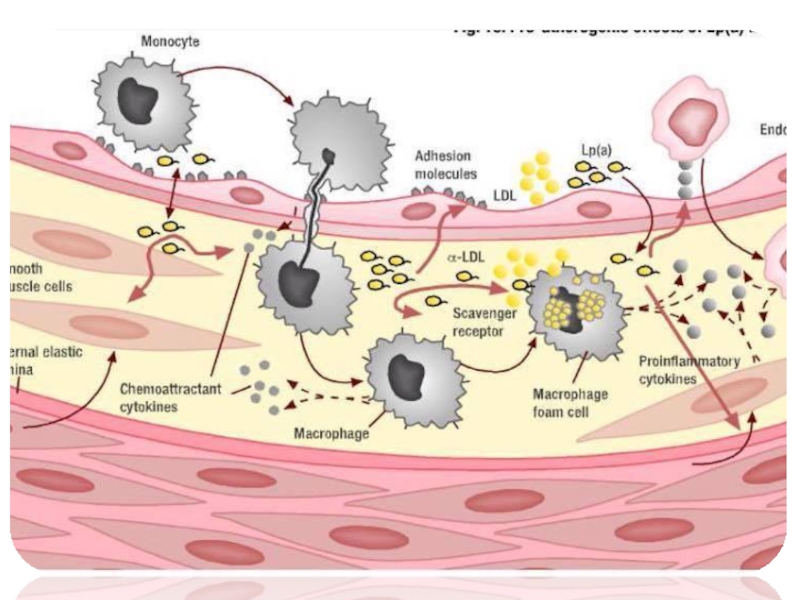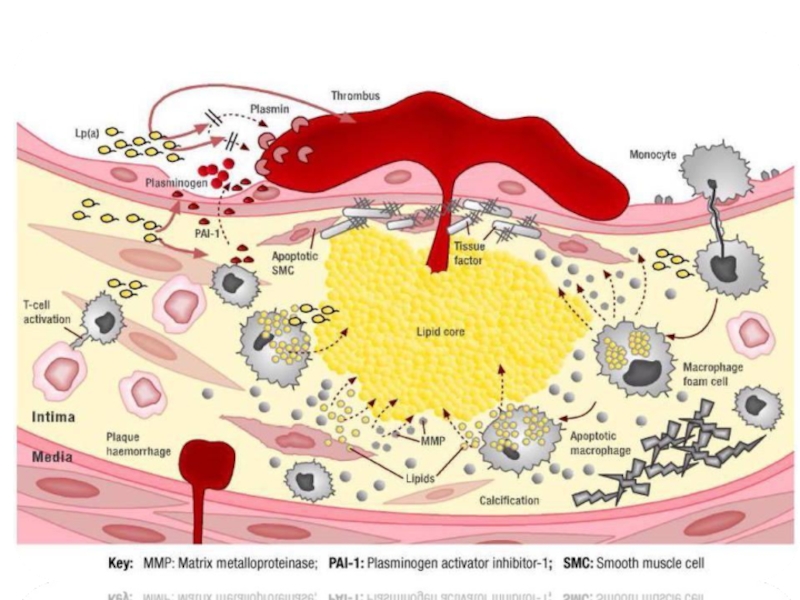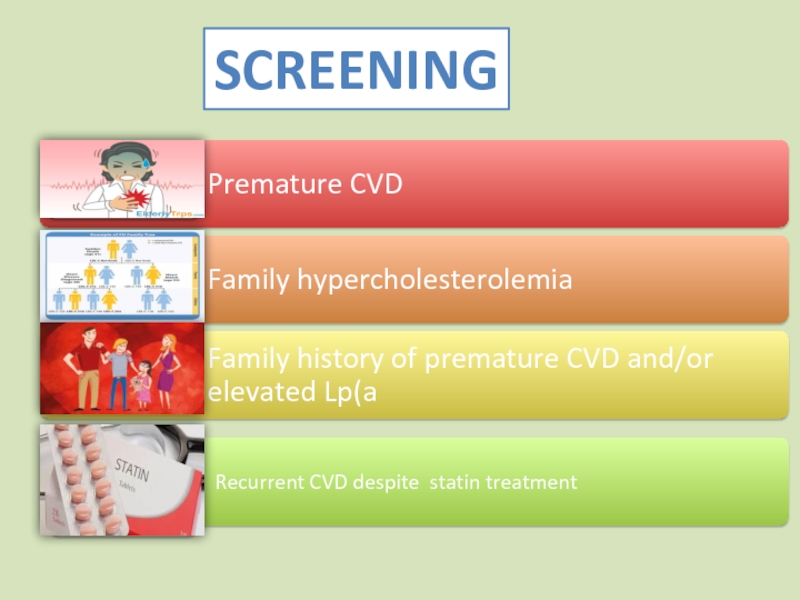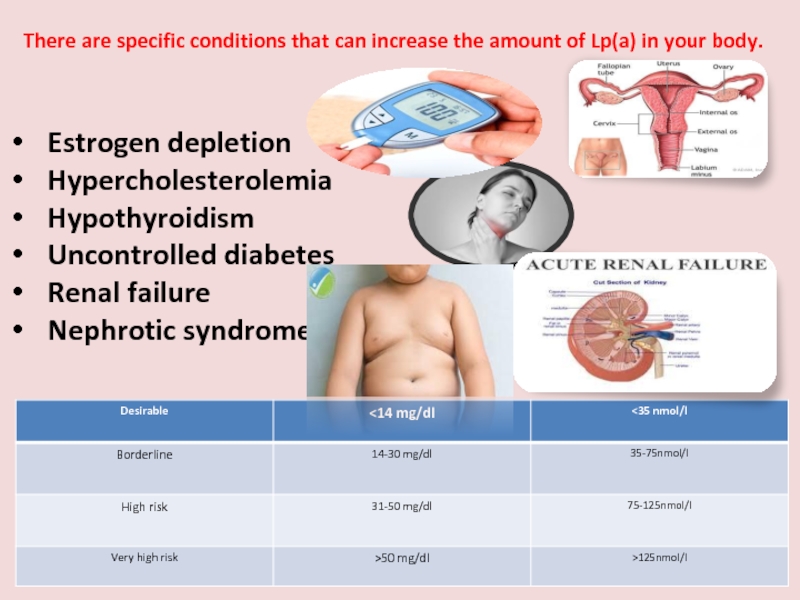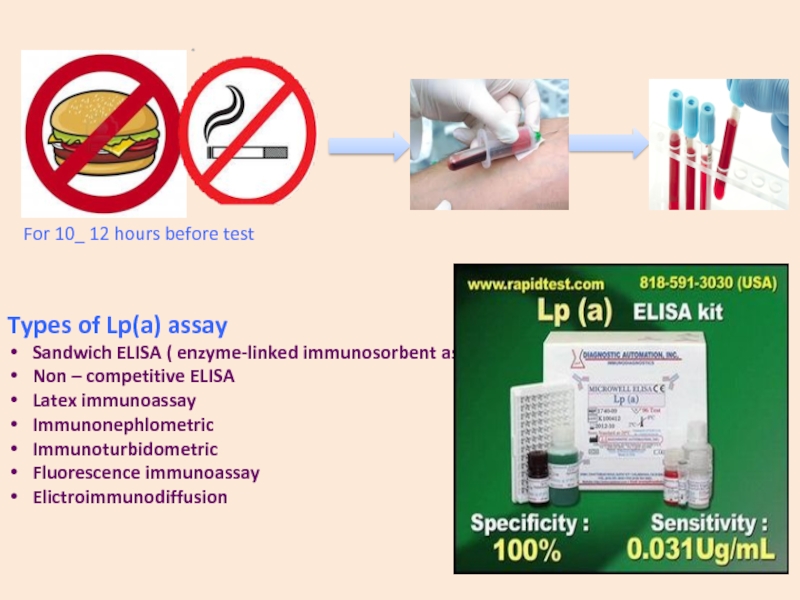Разделы презентаций
- Разное
- Английский язык
- Астрономия
- Алгебра
- Биология
- География
- Геометрия
- Детские презентации
- Информатика
- История
- Литература
- Математика
- Медицина
- Менеджмент
- Музыка
- МХК
- Немецкий язык
- ОБЖ
- Обществознание
- Окружающий мир
- Педагогика
- Русский язык
- Технология
- Физика
- Философия
- Химия
- Шаблоны, картинки для презентаций
- Экология
- Экономика
- Юриспруденция
Lipoprotein(a): an independent CVD Risk Factor Ejazzullah Jahed Na q ibullah
Содержание
- 1. Lipoprotein(a): an independent CVD Risk Factor Ejazzullah Jahed Na q ibullah
- 2. According to WHO, cardiovascular diseases today occupy
- 3. Слайд 3
- 4. lipoprotein (a) is an LDL particle whit
- 5. A single copy of apo(a) is linked
- 6. One in five people has high levels
- 7. The apo(a) component of Lp(a) particle promotes
- 8. Слайд 8
- 9. Слайд 9
- 10. Screening
- 11. There are specific conditions that can increase
- 12. For 10_ 12 hours before testTypes of
- 13. Thanks for your attention!
- 14. Скачать презентанцию
Слайды и текст этой презентации
Слайд 1Lipoprotein(a): an independent CVD Risk Factor
Ejazzullah Jahed
adviser : Professor Ablaev N.R
Слайд 2According to WHO, cardiovascular diseases today occupy fifth place in
the structure of global mortality, and, while maintaining the current
trends, by 2020, they will come out on top. Even today, more than 17 million people die each year from cardiovascular disease. The largest number of patients and deaths are men aged 35 to 65 years. If you do not change the situation, by 2020 this figure will reach 20 million worldwide in the year.
In the past quarter century, Kazakhstan has the highest mortality rate from diseases of the circulatory system among the countries of the European Union, Central and Eastern Europe and Central Asia region. According to the Institute of Cardiology and Internal Diseases Republic of Kazakhstan, the death rate from diseases of the circulatory system in our country for a long time reached a terrifying figure - 500-600 cases per 100 thousand population. Almost two million people are registered in the republic suffering from cardiovascular diseases. This is 12% of the population!
Cardiovascular disease mortality in 2015
Слайд 4lipoprotein (a) is an LDL particle whit an apolipoprotein (a)
attached to it. it is involved in the formation of
plaque and is a very strong independent risk factor for cardiovascular disease .Lp(a) accumulates in atherosclerotic plaque and its plasma concentration is predictive of heart disease in many patients . Because the density of Lp(a) overlaps that of dense LDL and buoyant HDL , separation of Lp(a) by density alone is inherently difficult . For this reasons , it is important to measure Lp(a) directly whit a specific Lp(a) assay in order to get truly accurate results.
LDL
Lp(a)
Слайд 5A single copy of apo(a) is linked to apo B-100
via a disulphide bond . Apo(a) is a large glycoprotein
ranging in size from 280,000 to 70,000 Daltons.Apo(a) comprises a series of loop structure called kringles, the LPA gene which codes for apo(a) was derived from the coding for plasminogen during evolution .
Слайд 6One in five people has high levels of Lip(a) from
birth based on genetic factors they inherited from their parents,
and most don’t know they have it. As high levels of Lip(a) travel through the bloodstream, it collects in the arteries, leading to gradual narrowing of the artery that can limit blood supply to the heart, brain, and kidneys as well as the legs. It can increase the risk of blood clots, heart attack or stroke.Important facts about Lip(a)
High Lip(a) is not rare. One in five people globally and 63 million people in the U.S. have high Lip(a) levels, and most do not know they are at risk.
High Lip(a) is the strongest, single, inherited risk factor for early coronary artery disease (CAD) and aortic stenosis, or narrowing of the aorta.
People living with high Lip(a) have a 2-4 times higher risk of early heart and blood vessel disease compared to people with normal Lip(a) levels.
High Lip(a) occurs in all ethnic groups, but is more common among African Americans and South Asians.
Слайд 7The apo(a) component of Lp(a) particle promotes the process of
atherogenesis , in part , due to its ability to
interfere whit the normal events of hemostasis .This interference results from apo(a) binding to plasminogen binding sites preventing plasminogen and t-PA from interacting . If t-PA cannot cleave plasminogen to plasmin then fibrin clots cannot be dissolved .
Lp(a) also interferes whit plasmin binding sites on the fibrin clot which also interferes whit the process of clot dissolution all of which leads to enhanced atherogenesis .
The green arrows indicated enhanced activity such as the ability of Lp(a) to increase the production and activity of PAI-1.
Red T- lines represent inhibitory processes
Role of Lp(a) in promotion of atherogenesis
